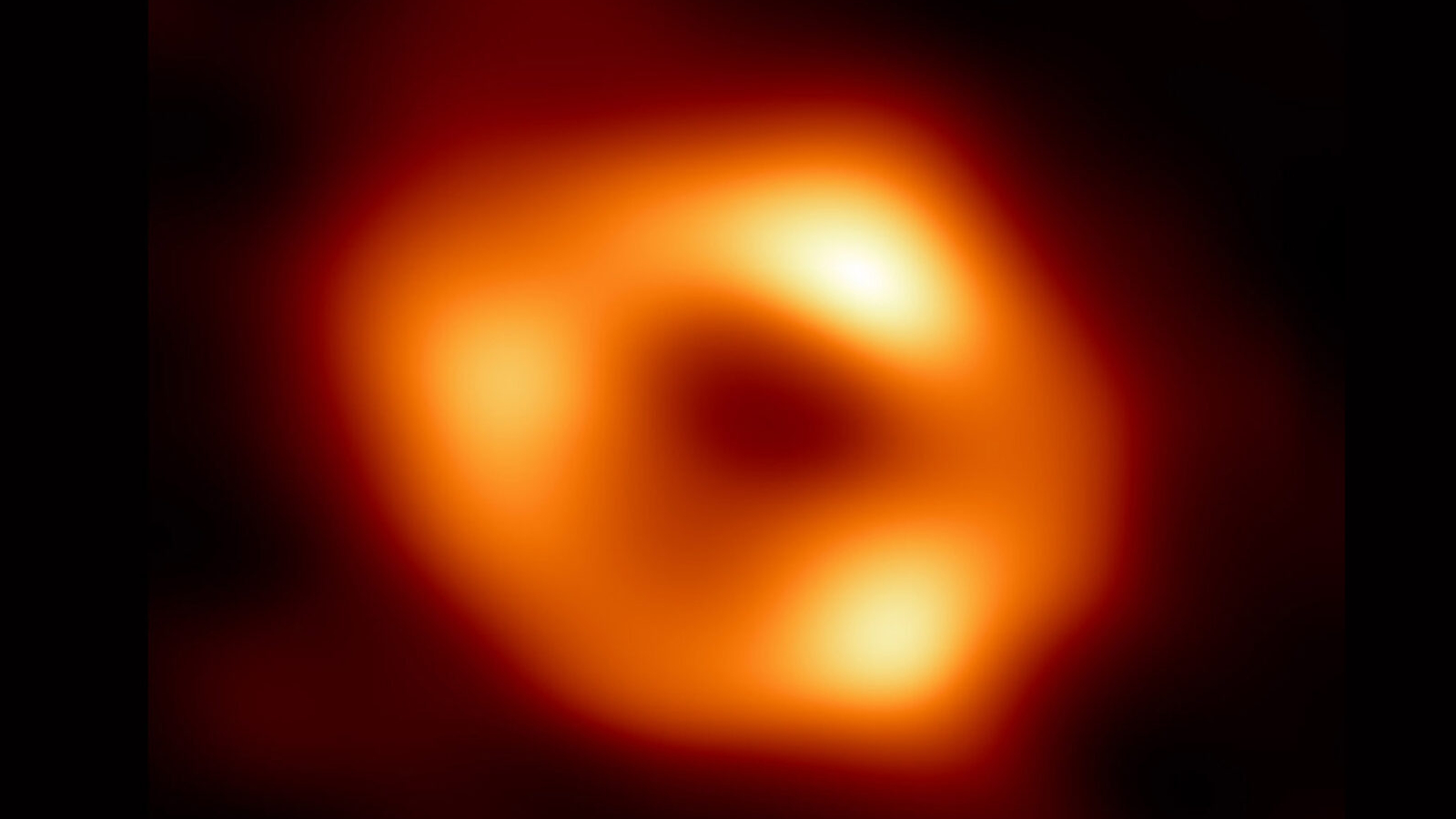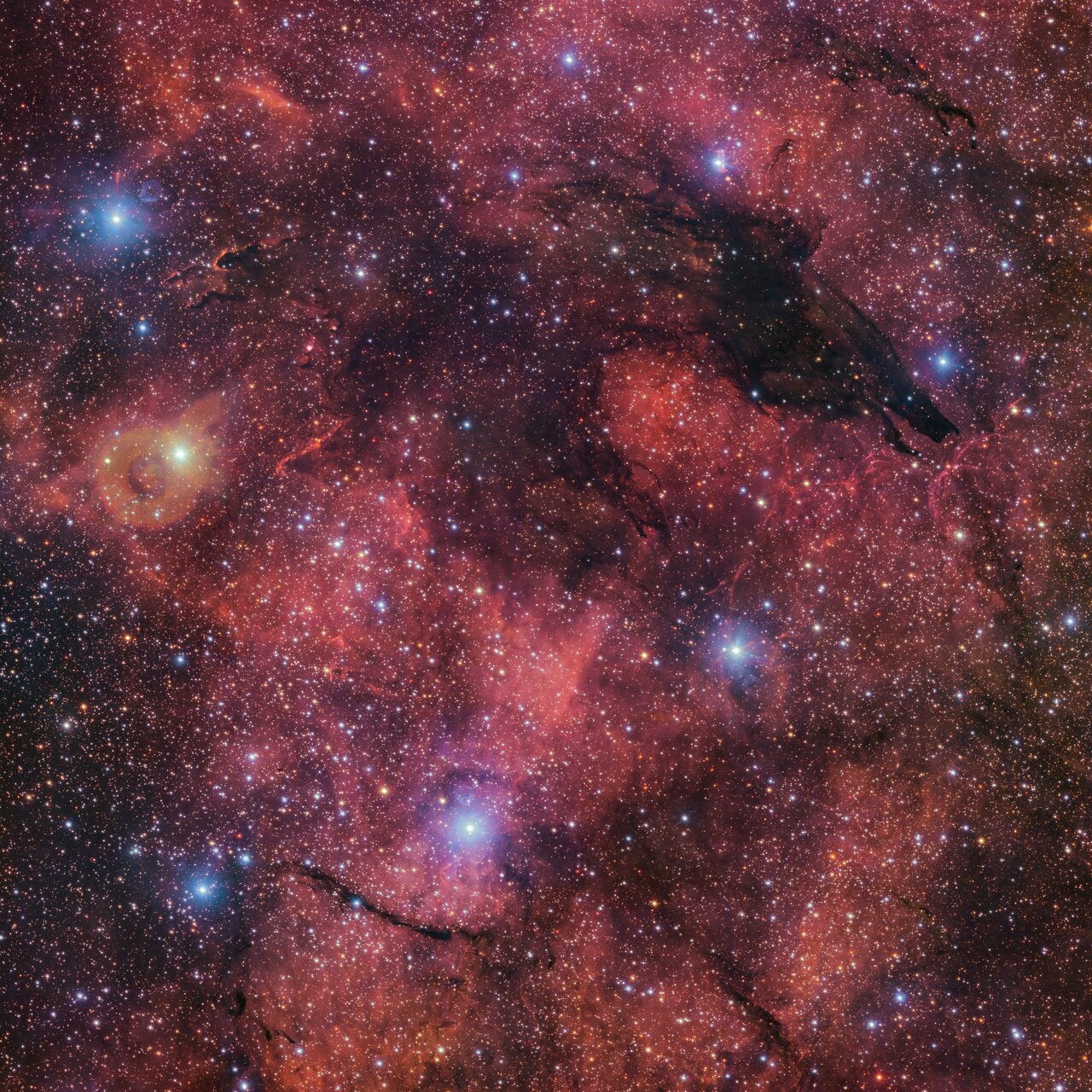
(Image credit: Event Horizon Telescope collaboration)
A powerful new technique is poised to revolutionize how astronomers observe black holes, by producing sharp, multicolored images that could reveal their dynamic evolution in real time.
By compensating for Earth’s turbulent atmosphere, the technique — called frequency phase transfer (FPT) — enables scientists using the global Event Horizon Telescope (EHT) array to see finer details and fainter features of cosmic objects (like black holes) than ever before. This method also improves the frequency of observations by expanding the EHT’s limited observation window, allowing scientists to potentially create time-lapse “movies” of black hole activity.
An international team of researchers have put this new technique to the test using three of the 12 telescopes belonging to the EHT array, including the IRAM 30-meter telescope atop Pico Veleta in Spain and the James Clerk Maxwell Telescope and Submillimeter Array observatories in Hawai’i, according to a statement from the Center for Astrophysics at Harvard & Smithsonian (CfA).
The challenge of observing the cosmos with ground-based telescopes begins with Earth’s atmosphere, which distorts radio waves coming from space, according to Sara Issaoun, lead author of the new study and an astronomer with the CfA. These distortions are especially problematic at higher frequencies like the 230 gigahertz (GHz) band — also known as the millimeter band, which the EHT currently uses — where signals are rapidly scrambled by atmospheric turbulence and water vapor. As a result, data can be collected only over short time spans, limiting sensitivity and making it harder to detect faint signals.
The FPT technique works by taking advantage of the fact that atmospheric variations affect different frequencies in similar ways, creating a measurable correlation. By observing at a lower frequency, specifically 86 GHz, which experiences slower atmospheric fluctuations, scientists can use that data to correct for the faster, more disruptive variations at 230 GHz. This allows for much longer averaging periods at the higher frequency, significantly boosting signal clarity and sensitivity. This leap in performance could enable the EHT to detect dimmer black holes and finer details than ever before, Issaoun told Space.com.

The EHT is a global network of radio telescopes that uses a technique called Very Long Baseline Interferometry (VLBI) to digitally combine observations from around the world. Currently, the EHT is only operational for about 10 days each April, when weather conditions align across the widespread telescopes. With FPT, astronomers could greatly extend that window, opening up opportunities to observe black holes more regularly and flexibly, even under less-than-ideal weather conditions.
That increased cadence is key to a major goal for the EHT: turning still images of black holes into movies that show how they change over time. Because most black holes evolve slowly, repeated observations are essential to track how matter swirls around them, how jets of material are launched, and how magnetic fields shift. By observing more frequently throughout the year, the EHT would be able to watch black holes change over time — potentially capturing phenomena in real time for the first time, Issaoun noted.
To make this possible, telescopes in the EHT array are being upgraded to support simultaneous observations at multiple frequencies. This includes adding receivers for the 86 GHz band. However, not every telescope in the array needs to be outfitted with the new receiver for FPT to be effective. Even partial implementation can enhance the performance of the full network, since all telescopes work in tandem to build a complete picture of a cosmic target. While the required hardware upgrades are relatively minor, each telescope has unique technical constraints, posing challenges to implementation, according to Issaoun.
— Event Horizon Telescope: A complete guide
— Event Horizon Telescope spies jets erupting from nearby supermassive black hole
— After snapping a photo of the Milky Way’s monster black hole, scientists dream of videos
In addition to boosting performance, this technique also adds a new layer of complexity to the images themselves. With multiple frequency bands, researchers can overlay data in different colors to reveal more detailed structures around a black hole. These multiband images will help disentangle features like swirling gas and magnetic fields, painting a more dynamic, multidimensional portrait of black hole environments.
Ultimately, the FPT technique could enable the EHT to not only see black holes more clearly but also more often, unlocking a new era of black hole science.
The team’s initial findings were published on March 26 in The Astronomical Journal. The researchers continually work on developing the full potential of the EHT network and exploring even higher-frequency capabilities — such as 345 GHz — that can further complement multiband observations.
Join our Space Forums to keep talking space on the latest missions, night sky and more! And if you have a news tip, correction or comment, let us know at: community@space.com.

